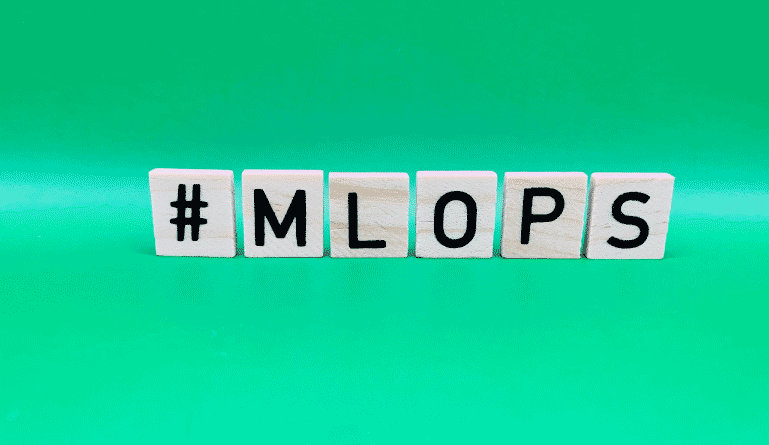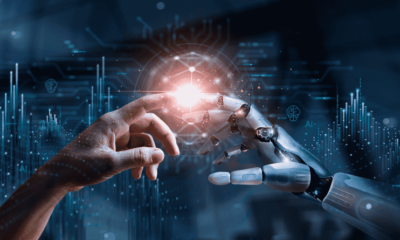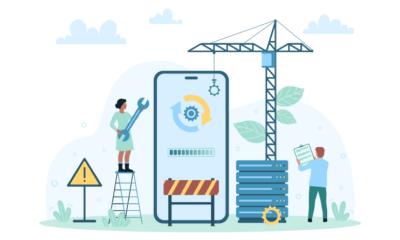
Machine learning (ML) is a fascinating area, with many companies successfully employing this technology to various challenges, from deploying chatbots to market or revenue forecasts. However, most data scientists say that at least 80% of their efforts fail before the launch of an ML model.
In most cases, the ML lifecycle is plagued by an absence of form and structured processes. It isn’t easy to fully industrialize machine learning since the life cycle comprises numerous complex components. It also calls for cross-team collaboration and handoffs.
MLOps — machine learning operations, or DevOps for machine learning — solves this problem.
What is MLOps? Defining Machine Learning Ops
MLOps is an interplay of people, platforms, and processes to realize machine learning’s business value. It promotes developing and implementing machine learning models utilizing monitoring, verification, and administration.
MLOps may be as tightly or broadly focused as necessary for project success. In some circumstances, it incorporates every detail from the data stream to model creation, whereas other initiatives may only require MLOps for model deployment.
A typical MLOps approach includes exploratory data analysis (EDA), data collection, feature modeling, model building and refining, and administration and retraining.
How Does MLOps Work?
There is no way to define MLOps; similarly, there’s no one way to run it. Organizations can adopt MLOps principles like collaboration, reusability, and automation at various stages of machine learning development.
The complete MLOps process can be divided into three broad phases: designing the ML app, ML testing, and app development, and the core ML production operations.
1. Designing the ML app
Phase 1 is dedicated to business awareness; data needs documentation and software ideation. During this phase, we identify our prospective users and devise a solution for the issue at hand using machine learning. The ML will improve the user’s productivity or boost the application’s interactivity.
Essentially, this stage defines and prioritizes ML use cases. The design phase also examines the available data necessary to train and condition the machine learning model, outlining the app’s functional and non-functional specifications.
Using these requirements, the framework of the ML application, the method of delivery, and the test set for the eventual ML model will be established.
2. Testing and app development
During this phase, the suitability of ML to the business problem is confirmed, typically via a Proof-of-Concept (POC) technique.
Here, iterative processes to refine the ML algorithm are carried out. This may involve identifying machine learning algorithms appropriate for a specific problem or re-engineering data to refine the model more precisely. The primary objective of this stage is to create a stable, production-ready machine learning model.
3. ML production operations
The main goal of this phase is to execute the already developed ML model. This is achieved using recognized DevOps practices, like evaluation, versioning, ongoing delivery, and monitoring. Automated continuous integration and continuous delivery (CI/CD) systems help data scientists quickly examine emerging ideas around feature engineering, model construction, and more.
This is because MLOps grew out of DevOps in certain respects. Like DevOps was created to organize and optimize software development, MLOps is now a method to envision and run machine learning models effectively.
Why is MLOps Necessary?
MLOps is necessary as a distinct discipline from DevOps and other software development models for the agile world. That is because machine learning development presents a few unique challenges that only MLOps is purpose-built to resolve.
Due to the exploratory nature of machine learning, the development process starts with ML research and trials. This helps find the optimal modeling methods and parameter settings for a given problem.
The challenge lies in tracking and sustaining the repeatability of these exercises so that the code can be reapplied and the model’s efficacy on an identical dataset can be replicated.
However, the iterative nature of MLOps and the closed feedback loop make it ideal for running experiments.
Like other software systems, testing an ML framework presents added operational complexity. Along with the code, it requires modeling and data, necessitating the participation of data scientists. Again, the collaborative nature of MLOps helps address this.
Finally, launching an ML system entails more than deploying an offline-trained ML model. It also demands the setting up a multi-step workflow that instantly restructures/recalibrates and launches yet another service into development. Simply put, the self-learning capacity of ML is another challenge; it means the deployment is only partially complete.
And before you can launch new models, you have to automate the training and confirmation stages for this workflow. MLOps seeks to address this through automation.
The Essential Benefits of MLOps
By adopting an MLOps practice, companies developing AI applications can:
1. Maintain ML performance over time
It is vital to monitor the behavior and efficacy of ML to avoid model deviation.
Deviation, or “Drift” as it’s popularly called, is the performance decline of machine learning over time. Concept drift occurs when the association between input parameters and the target parameter changes. When the statistical attributes of input data alter, data drift happens.
MLOps lets businesses consistently track model tendencies and trends — and gain insights into their performance. There are mechanisms in place to recalibrate the model continuously. MLOps platforms and tools also instantly send notifications to your team in case of a model drift.
2. Prevent bottlenecks from holding back ML development
Intricate, data-intensive algorithms can often encounter bottlenecks. MLOps enables interactions between ops and data teams, which decreases the incidence and extent of issues of this type.
MLOps helps you bring together the diverse skill sets of different teams who previously worked in silos. You can create, evaluate, track, and launch ML models more efficiently. f teams through collaboration. This enables businesses to develop, test, monitor, and deploy machine learning models more efficiently.
3. Reduce the costs of productizing ML
MLOps can significantly lower costs across the entire lifecycle of the process. Automation reduces the quantity of manual work required to handle machine learning models. This lets individuals devote their time to more productive job responsibilities.
Also, MLOps enables systematic detection and mitigation of errors. Reduced errors in model administration will also result in cost savings. As no other hardware tools are required for model versioning, a substantial portion of operational expenses can be prevented.
4. Support hybrid work and distributed teams
A data scientist needs help to accomplish MLOps objectives. Therefore, teamwork with other IT and infrastructure specialists is crucial, as is working with those who are WFH or in a different location.
MLOps enables decentralized employee teams to work together on a unified delivery model. It decreases deployment costs and time frames. All departments can interact and analyze data swiftly and effectively if they cooperate on an integrated distribution model.
Also, a particular department or team can independently acquire data and train new models without impacting the model as a whole. That’s the benefit of the modular process flow that MLOps espouses.
5. Work faster and speed up innovation
Fast innovation is a remarkable advantage. MLOps is intended for cross-functional use by data processing teams, analysts, and IT engineers. It offers environments for self-service availability of curated datasets.
Therefore, it accelerates the development and deployment steps. Work progresses more rapidly. Data architects and scientists with duplicated, absent, or incorrect data waste less time. Owing to standardized datasets, you can work with confidence in a central data environment featuring all of your ML development tools.
The Need for MLOps in Sustainable AI Development
As machine learning and AI proliferate in any software production environment, we must implement best practices and recommended tools. These will guide ML models’ evaluation, deployment, management, and monitoring in real-world production scenarios.
With MLOps, our goal is to prevent the technical debt that’s often an intrinsic part of complex applications such as machine learning.
Thanks to an emerging technology segment called MLOps platforms, it is now possible to tightly structure the ML experimentation, development, production, and maintenance process with an eye on the future and sustained value addition for businesses.
Next, Read IDC’s take on cloud-based machine learning development. If you enjoyed reading this article, share it on social media by clicking the top of the Facebook, LinkedIn, and Twitter buttons.



